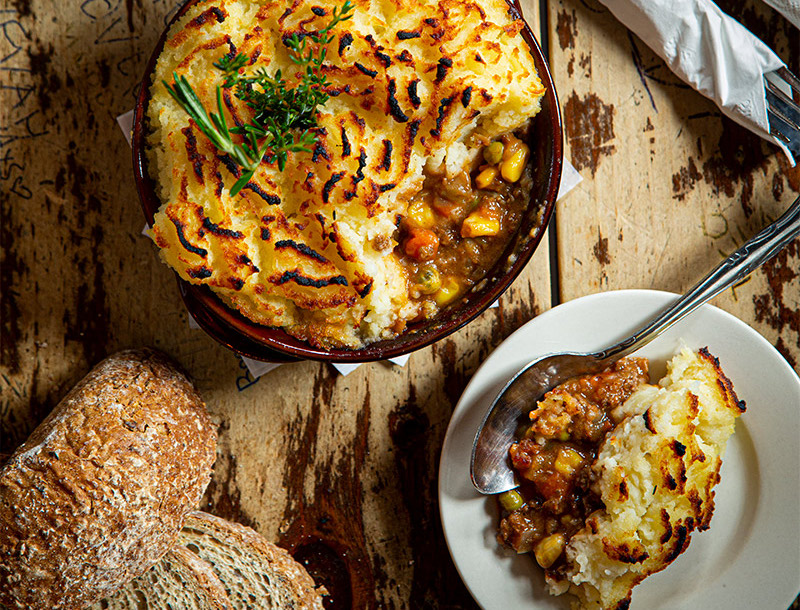Since colonial times, the Irish have helped define the character, culture, and cuisine of Boston and beyond. Fleeing poverty, famine, and freedom from British rule, they arrived over the centuries with little more than their belongings, customs, and family recipes.
Food has always been a cultural touchstone for anyone living away from home. And, for the Irish settling on the East Coast, recreating the dishes they loved and knew was comforting and easy. Items like brown bread, Shepard’s Pie, beef stew, mashed potatoes, and fish and chips all use ingredients found in New England.
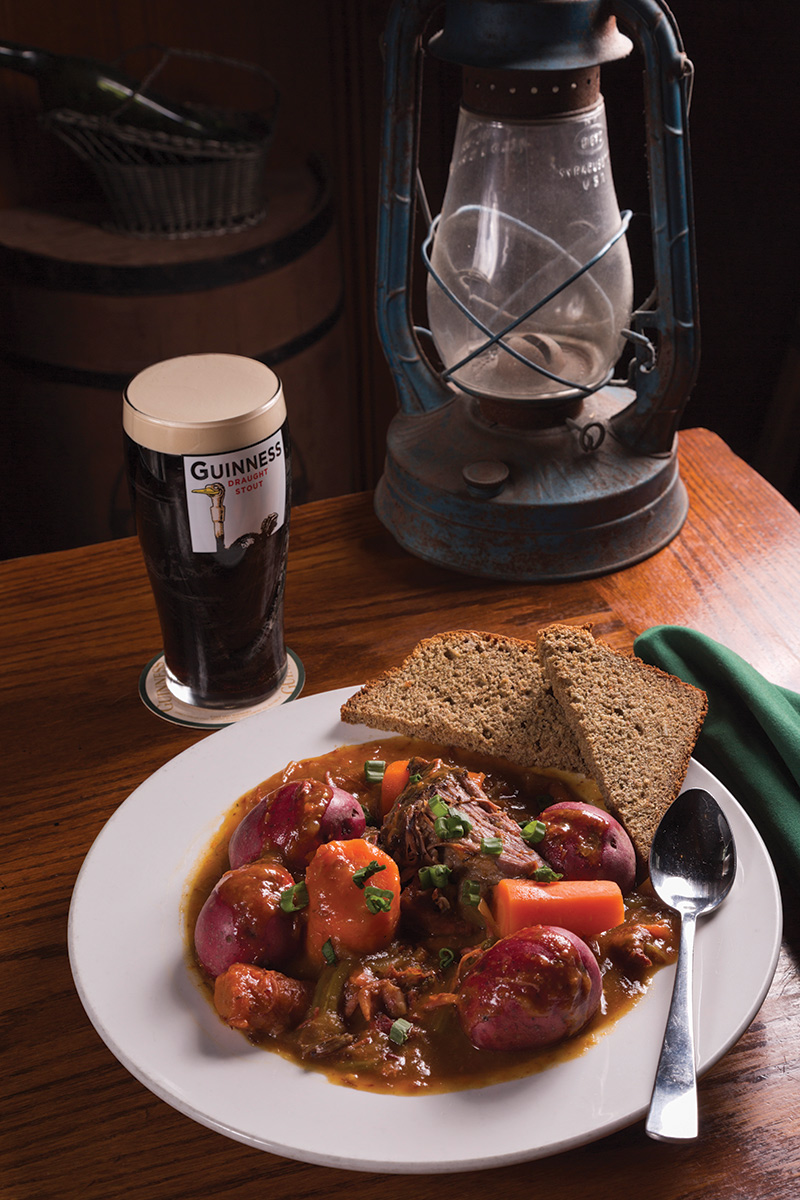
“Most traditional Irish dishes were based on cheap food,” says Eilish Havey, who grew up on Bunratty Road in Dublin in the ’60s and ’70s and owns Bunratty’s Tavern in Reading. “It was all based on stretching food to feed a family. I ate a lot of tripe growing up in Dublin, which I wouldn’t touch now, but everything we ate was incredibly fresh. My mother went to market every day and we’d go to the docks and get fish off the boats.”
At Bunratty’s Tavern, Havey uses recipes she learned from her mother and grandmother to craft her Irish specialties, including the Dublin Bay Fish & Chips. For each order, she dunks two loins of cod in egg wash, rolls them in flour and cornmeal, and deep-fries them until perfectly crisp. House-made French fries, coleslaw, and tartar sauce come alongside.
The restaurant serves ethnic dishes, too, but with an Irish twist. For example, spring rolls come stuffed with corned beef, cabbage, and a horseradish-cheddar sauce, while guacamole arrives with kettle chips, not corn chips. “We’re very strong on comfort food,” says Havey, “and have a very loyal clientele.”
Hankering for a traditional boiled dinner? The one at The Irish Cottage in Methuen won’t disappoint—unless you’re expecting the version served in Ireland. “Believe it or not, a typical Irish boiled dinner is made with cured bacon, not corned beef, and it’s always roasted, not boiled,” says Jimmy Kearney, who co-owns the restaurant with his cousin.
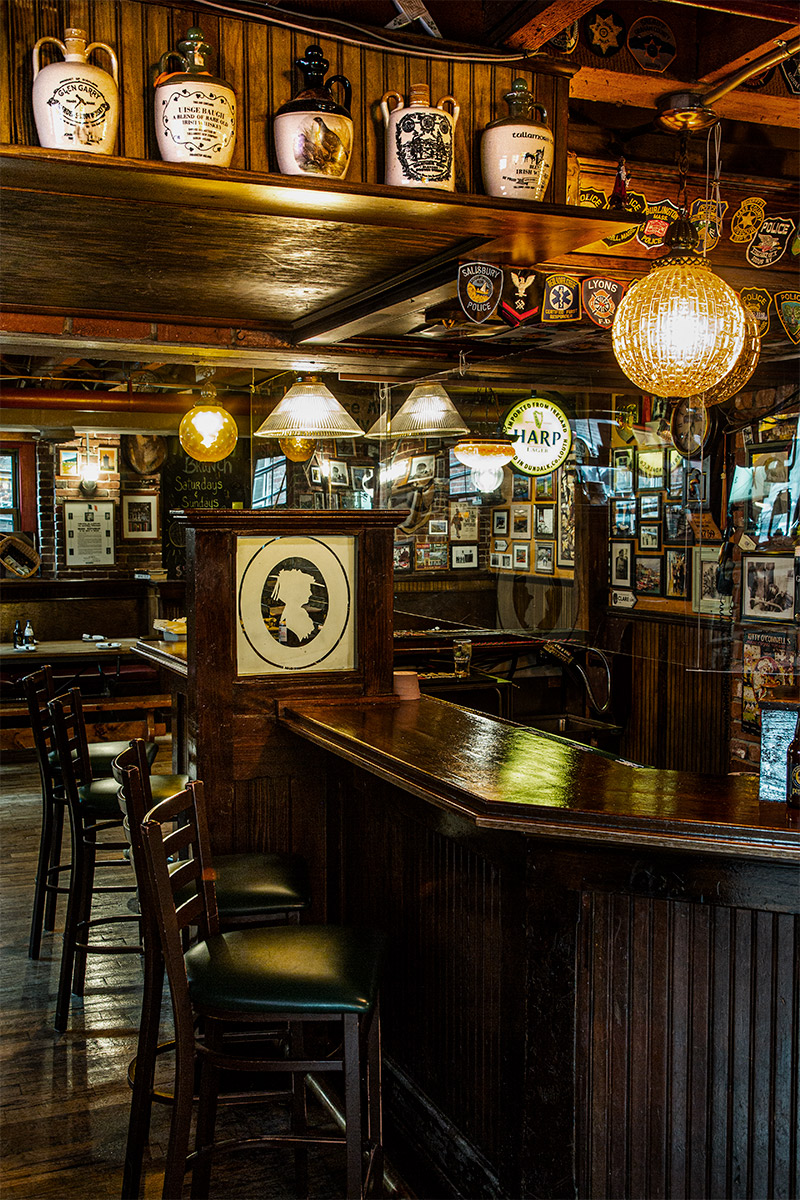
The switch to corned beef came when the Irish arrived in America and found corned beef a cheaper alternative to fresh meat. Kearney, who grew up in County Galway, boils his corned beef in pickling spices for several hours before cooling and slicing it. Every order arrives hot in its own juices with steamed cabbage, carrots, and red bliss potatoes.
Another top seller is the country–style Guinness beef stew. “We braise chuck meat in Guinness Stout and then add boiled carrots, celery, and onions and a stock made from the bones,” says Kearney, who serves the stew over boiled red bliss potatoes with two slices of Irish brown bread. “We’re a scratch kitchen and don’t buy a lot of frozen items.”
In Haverhill, The Peddler’s Daughter serves both contemporary and Irish fare, including the ever-popular Cottage Pie, similar to Shepard’s Pie, only made with ground beef, not lamb. “It’s our number two seller (after fish and chips),” says owner Michael Conneely, who grew up in County Galway and developed all the restaurant’s recipes.
“We simmer the ground beef in veal stock and that’s the secret. It melds all the flavors together and makes it more robust.” Carrots, corn, and peas round out the base served in individual crocks topped with champ, a velvety blend of mashed potatoes, butter, cream, and scallions. For each order, the kitchen bakes the pie until the champ turns golden.
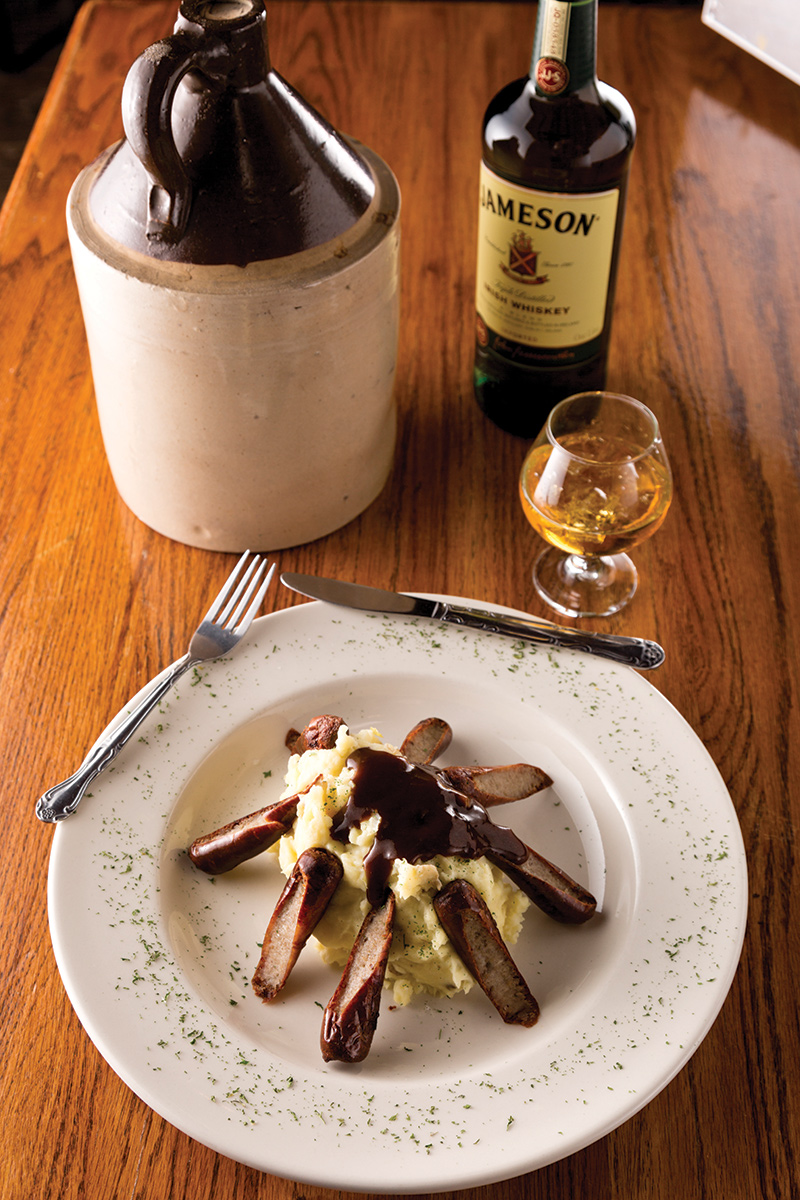
“Irish food is comfort food,” says Conneely. “People know what they’re getting and the price points are good.”
Ronnie Brogan worked in construction before opening O’Neill’s in Salem. “I was always interested in opening a bar, having worked at my uncle’s bar back in Ireland,” he says. “But back in the day, most Irish pubs didn’t serve food, or it wasn’t that good. So I decided to offer pub grub but made fresh every day.” About 20 percent of O’Neill’s menu features authentic Irish fare, like bangers and mash, which Brogan and his nine siblings ate at least twice a week growing up in County Monaghan.
“It’s a dish that goes back to the 1920s or ’30s when Ireland was a very poor country,” says Brogan. “Most people grew potatoes and had two or three pigs, so it’s a very cheap dish and served in most Irish pubs and restaurants.” At O’Neill’s, the pork sausages come to the table seared and juicy over mashed Yukon Gold potatoes under a blanket of gravy. “Our soups, salads, and mains are not gourmet, but they’re made fresh,” says Brogan.
For Bob Murray, whose maternal grandmother and grandfather hailed from County Tipperary and County Galway, respectively, opening The Emerald Rose in Billerica was a dream come true. “I loved the warm, friendly, family feeling of the Irish pubs in New York, where I used to bartend and like to think I’ve recreated that in Billerica,” he says.
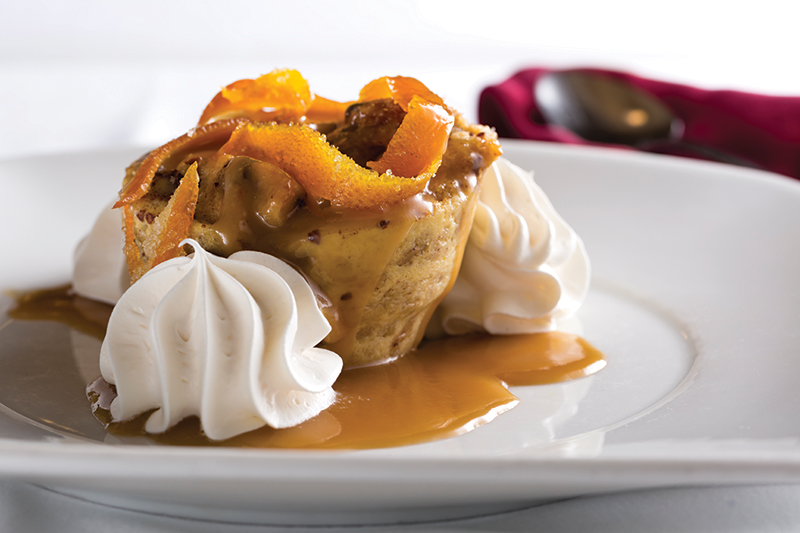
While many customers cherish the restaurant’s savory Irish fare, the desserts prove just as popular, including the Irish bread pudding. Made with the restaurant’s homemade raisin Irish soda bread, the warm, creamy pudding arrives crowned with a Bailey’s Irish Cream–butter sauce, whipped cream, and candied orange rind. Another fan favorite is the Irish brownie sundae, composed of a chewy nut-free fudge brownie topped with chocolate whiskey ice cream, hot fudge sauce, and whipped cream.
“It’s so big it’s usually shared,” says Murray, “but if one person orders it and eats the whole thing, they’ll have to go to church and ask for forgiveness!”
To celebrate St. Patrick’s Day, all the restaurants plan to offer plenty of Irish specialties. And while pandemic protocols may limit festivities like live music, rest assured the Irish spirit will be out in full force.
bunrattytavern.com; oneillsofsalem.com; theemeraldrose.com; theirishcottagepub.com; thepeddlersdaughter.com

